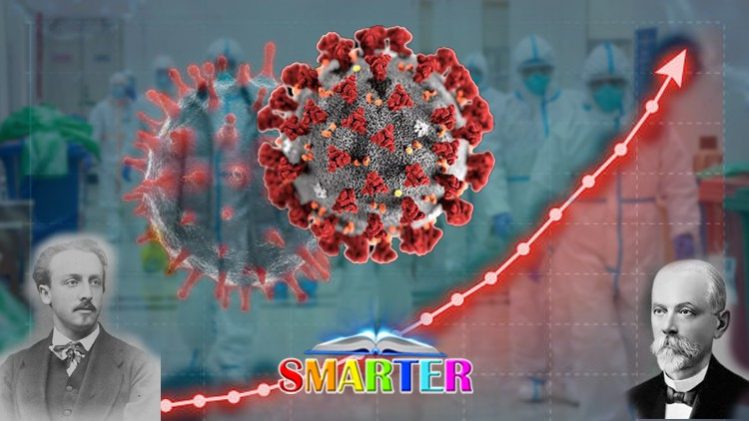
Virus Definitions & Animal Viruses Methods
Viruses Structure & Classification
Virus Growth in Cells
Immune System, Virus Neutralization, Animal Viruses, Cells and Hosts Interactions
Virus Latency Mechanism, Transmission and Evolution of Viruses
Human Viral Diseases
Laboratory Diagnosis of Viral Infections, Nomenclature of Animal & Human Viruses
Antiviral Drugs & Polioviruses
Coxsackieviruses, Echoviruses, Enteroviruses, Rhinovirus, Coronavirus, Influenza & Mumps
Coxsackieviruses, Echoviruses, Enteroviruses, Rhinovirus, Coronavirus, Influenza & Mumps
Respiratory, Measles, Rubella Viruses, Chemotherapy of Viral Diseases and Epidemiology of Viral infections
Viruses of Humans
Virology Practical Tests and Answers
How COVID19 and Coronaviruses invaded our World?
Virology is the scientific study of viruses – submicroscopic, parasitic organisms of genetic material contained in a protein coat and virus-like agents. It focuses on the following aspects of viruses: their structure, classification and evolution, their ways to infect and exploit host cells for reproduction, their interaction with host organism physiology and immunity, the diseases they cause, the techniques to isolate and culture them, and their use in research and therapy. Virology is a subfield of microbiology.
The identification of the causative agent of tobacco mosaic disease (TMV) as a novel pathogen by Martinus Beijerinck (1898) is now acknowledged as being the official beginning of the field of virology as a discipline distinct from bacteriology. He realized the source was neither a bacterial nor a fungal infection, but something completely different. Beijerinck used the word ‘virus’ to describe the mysterious agent in his ‘contagium vivum fluidum’ (‘contagious living fluid’). Rosalind Franklin proposed the full structure of the tobacco mosaic virus in 1955.
A major branch of virology is virus classification. Viruses can be classified according to the host cell they infect: animal viruses, plant viruses, fungal viruses, and bacteriophages (viruses infecting bacteria, which include the most complex viruses). Another classification uses the geometrical shape of their capsid (often a helix or an icosahedron) or the virus’s structure (e.g. presence or absence of a lipid envelope). Viruses range in size from about 30 nm to about 450 nm, which means that most of them cannot be seen with light microscopes. The shape and structure of viruses has been studied by electron microscopy, NMR spectroscopy, and X-ray crystallography.
The most useful and most widely used classification system distinguishes viruses according to the type of nucleic acid they use as genetic material and the viral replication method they employ to coax host cells into producing more viruses:
- DNA viruses (divided into double-stranded DNA viruses and single-stranded DNA viruses),
- RNA viruses (divided into positive-sense single-stranded RNA viruses, negative-sense single-stranded RNA viruses and the much less common double-stranded RNA viruses),
- reverse transcribing viruses (double-stranded reverse-transcribing DNA viruses and single-stranded reverse-transcribing RNA viruses including retroviruses).
Virologists also study subviral particles, infectious entities notably smaller and simpler than viruses:
- viroids (naked circular RNA molecules infecting plants),
- satellites (nucleic acid molecules with or without a capsid that require a helper virus for infection and reproduction), and
- prions (proteins that can exist in a pathological conformation that induces other prion molecules to assume that same conformation).
Taxa in virology are not necessarily monophyletic, as the evolutionary relationships of the various virus groups remain unclear. Three hypotheses regarding their origin exist:
- Viruses arose from non-living matter, separately from yet in parallel to cells, perhaps in the form of self-replicating RNA ribozymes similar to viroids.
- Viruses arose by genome reduction from earlier, more competent cellular life forms that became parasites to host cells and subsequently lost most of their functionality; examples of such tiny parasitic prokaryotes are Mycoplasma and Nanoarchaea.
- Viruses arose from mobile genetic elements of cells (such as transposons, retrotransposons or plasmids) that became encapsulated in protein capsids, acquired the ability to “break free” from the host cell and infect other cells.
Of particular interest here is mimivirus, a giant virus that infects amoebae and encodes much of the molecular machinery traditionally associated with bacteria. Two possibilities are that it is a simplified version of a parasitic prokaryote or it originated as a simpler virus that acquired genes from its host.
The evolution of viruses, which often occurs in concert with the evolution of their hosts, is studied in the field of viral evolution.
While viruses reproduce and evolve, they do not engage in metabolism, do not move, and depend on a host cell for reproduction. The often-debated question of whether they are alive or not is a matter of definition that does not affect the biological reality of viruses.



